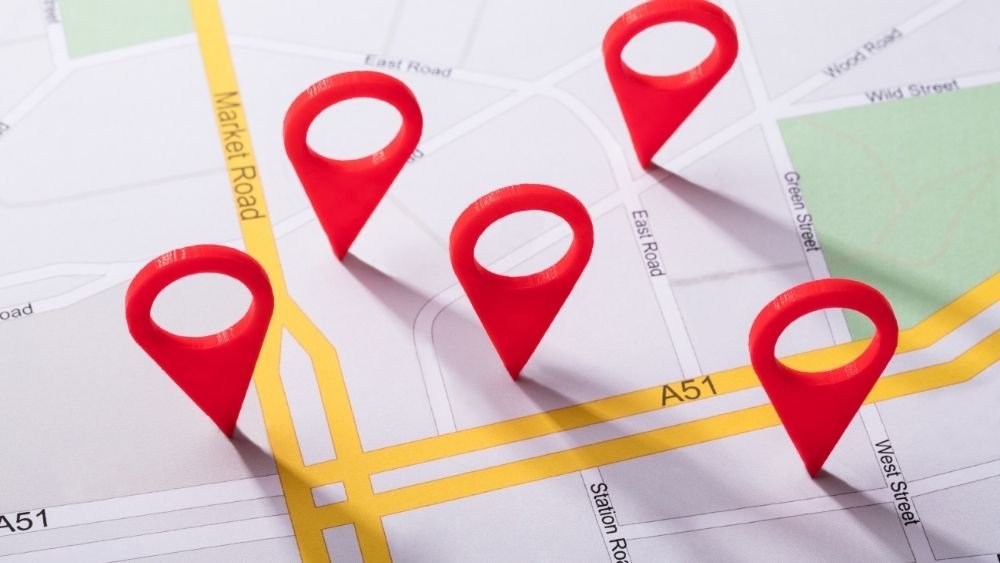Gone are the days when marketing would revolve around producing a generic product that was generally tailored to suit the needs of a section of people. In today’s day and age, almost everyone prefers some customization or uniqueness to the kind of products tailored for them.
This is why it is crucial to understand the demographics of a certain region of geography to produce the most personalized products or services.
What is Geofencing?
The solution to personalization is geofence marketing, which focuses on location-based solutions while identifying a geographic boundary around a specific point of interest. This kind of marketing has been there since the early 2000s, and today the need for geofencing is soaring like anything.

The geofence marketing system works so that when a mobile device enters a specific area, several different events are triggered, and these triggers use the method of effective advertising to showcase products to customers. This was previously done with the help of SMS services or simply called SMS marketing.
But with the advancement of technology and mobile devices controlling most people’s preferences, developers have introduced push notifications to show them programmed advertising.
The geofencing process helps brands cater to a larger audience while tailoring their products to suit a specific segment of people with the same sort of preferences. It also helps in retargeting and gaining other location-based insights.
How does Geofencing work?
Geofencing is a fairly simple process with several programs running in the background to tailor a particular advertisement to the end consumer. It works on the algorithm of effectively understanding the customer’s patterns and location. Geofencing follows the following steps:
- The first step to geofencing is to identify a common geographical radius around a real-world location. This need not be exactly as the radius is almost often around a surveyed region with ideal target demographics.
- The next step is to set up a virtual barrier called a geofence around the location, to specify the boundaries and treat the region as a special set of customer base or audience to target or define the area with a set of specific parameters.
- The moment a geographic area is specified whenever a device enters the area or, for the matter of fact, exits the area, an event is triggered. The background processes then use their algorithms to showcase several ads relevant to the particular person in the geofence area.
Benefits of Geofencing Marketing
Here is a list of benefits associated with geofencing marketing that you should know:
- It makes it easy to reach the customers, at just the right place, and at the right time.
- It can help to enhance local sales. Geofencing marketing is ideal for a local marketing campaign.
- It helps to enhance the audience’s engagement with the brand.
- It also helps in personalizing the experience of the customers.
- It also assists in analyzing and beating out the competitors. This will help in the growth of the business.
Understanding the benefits of geofencing marketing is very important as it can help your business grow.
Limitations of Geofencing and the Shortcomings of it in Advertising and Marketing
While geofencing might sound like the solution to many real-life problems, the effective implementation of the same is quite difficult to execute as there are several hurdles that Geofences have to face. This is especially a problem for many small-scale organizations as they do not have enough resources to deploy a technological team to build a stable and sustainable geofencing technology system.
It often happens that when a device registers itself inside a geofence by mistake, push notifications are sent, which are completely irrelevant. In the case of very tightly packed and nuclear cities, it is extremely troublesome to measure locations and tailor Geofences around the busy centers.
- Inaccuracy – A very common problem of Geofencing is that it often fails to be accurate. The ads need to be relevant to provide the optimum amount of value to a customer. When an ad is irrelevant, it brings down the image of the brand or organization that is sending them the content, which can often work in the exact opposite way.
- Scalability – Since geofencing is a system that is so highly targeted and extremely automated in its performance, it often becomes difficult to address the audience in case the audience is very small. Most regions are very dynamic in the way they are and can change at any point in time, and maintaining a geofence that is always up to date is a lot of investment.
- Too Broad – It is extremely difficult to maintain an accurate geofence in tightly packed locations, as discussed. Still, the problem worsens when several stores in the same locality are trying to geofence their marketing or advertising system.
How Geofencing Can Be Used Effectively by Small Businesses & Startups

Geofencing or location-based marketing is not the norm in today’s day and age. At the same time, the push produced by geofencing is not as powerful as it was in its initial days. This calls for an effective strategy to implement better accuracy and a different approach to executing and reap geofencing benefits. It is still a great way to assess a location and achieve convincing results.
Targeting Customers
Geofencing was always known to be a system that would entirely rely on a radius that would cater to specific geography. Deploying a significant amount of resources can help in defining exact geographical boundaries with the help of several navigation systems that are available today. Using two or more navigation systems makes the entire process of geofencing a lot easier and more accurate.
For example, when customers have organizations’ apps and enter these Geofenced areas, messages can be sent while ensuring that no irrelevance or discomfort is passed on to the customer. This will also make customers visit the retail location.
Having several Geofences and tailoring them perfectly is the key here. This will also help the brand define who they are; customers will often not get jumbled up with their competitors. Organizations should also spend a significant amount of money building better geodata to show that they can understand how a device behaves over time. Trying to build a detailed customer database profile like always is extremely useful.
This helps organizations build segments of customers and helps the brand reach out better to the customer and be relevant in all marketing endeavors. This cuts down the problem of accuracy, and geofencing can be leveraged to build more sales and have more footfall in retail stores.
Understand the Behavior of a Particular Demographic
While geofencing is mostly used for push notifications to market products, it can be strategically used to understand the behavior of nearby customers and devices that regularly visit a particular vicinity. This builds the potential to appeal to an ideal customer. The same pre-sales marketing can be converted into a post-sales marketing system using location data.
An organization can send customers several coupons or relevant advertisements based on their shopping preferences whenever they leave. Interlinking several processes like this can help build a better geofence and complete the technology.
This will also help organizations send messages to only those who visit their retail stores and eliminate any sort of inaccuracy for people who walk by a particular store. This can also be useful when building an advertising campaign where an organization can target a group of people beyond the geofence with a particular profile in its database and send them relevant advertisements over time.
Leveraging The Future Of Geofencing To Your Advantage

Geofencing in marketing and advertising is and always will be an effective way to communicate with ideal and prospective customers. It focuses on marketing at that very moment, and this is what makes it very real-time. With the perfect strategy, geofencing is undoubtedly one of the best ways to tailor customized advertising for a larger audience.
Location-based segments of audiences and their intent, if recognized correctly, can be a great way to suit the needs of a company’s marketing campaign. They are also scalable, which brings flexibility. With the right kind of strategy, geofencing can be applied to almost every other segment of an organization’s marketing channels.
This completes the vacuum that is created when push notifications are not used. This makes it less inconvenient for customers who are not interested. The entire programmatic marketing stack can be successfully leveraged to target users wherever they are, be it within or outside the geofence.
Conclusion
Geofencing has been around for a very long time. Still, with the advancement of several other marketing technologies, the use of Geofencing has reduced slightly over the past few years. Leveraging geofencing and going beyond what is usual is still a great way to unlock the potential of the advantages of using the technology of geofencing.
Even today, many organizations worldwide use geofencing as a strategy to execute location-based marketing with proper research and technology teams!








